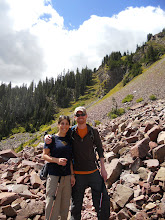Startling Statistics
According to the International Reading Association, in 2003, the United States ranked 15th of 29 OECD countries in reading literacy. In 2006 the United States ranked 21st and 25th of 30 OECD countries in scientific literacy and in math literacy, respectively. These numbers are startling considering this is a global economy. Jobs are not just being competed for in the United States, but overseas and beyond.
With teaching math this year, I decided that I wanted to integrate literacy as much as possible. In order to get myself started on this venture, I purchased a curriculum by Sopris West called Step Up to Math: Writing.
Prior to this book, I had been using some strategies that were in my Language Arts teaching arsenal such as summarizing, finding the main idea, and creating leveled questions for students. However, since reading this book cover to cover, I have found many more ways to integrate reading and writing.
The book has 7 sections: vocabulary, reading and taking notes, summarizing text and writing about graphs, asking and answering questions, writing for assessments, writing for general assignments, and creative/personal writing.
The vocabulary section discusses a variety of ways to include vocabulary in your lesson. They suggest that students keep a notebook with vocabulary words, student friendly definitions and a picture or example to go with it. There is a section within vocabulary that has graphic organizers that outline how to break down definitions so students can retain information better. Additionally, there are organizers for creating concept maps, word maps, and word banks. Of all the vocabulary materials, I have to say that my favorite was the section on riddles. The authors explain that writing and solving riddles is one way to integrate vocabulary and spice up the lessons a bit. Here was a riddle example that I particularly liked: People call me sir for short. I like pie. I hang around circles. Who am I? Isn’t that great? By doing these in class and letting the kids create riddles, this is one of many ways to include vocabulary.
The next section, which was reading and taking notes, discusses just that: how to read and take notes in math. Some of the suggestions include 2 and 3 column note taking, which is very similar to Cornell style notes. There is also some examples that show teachers how to make a framed response, or cloze procedure-like paragraph where students fill in main ideas from that particular lesson.
One of my favorite sections of this book was the section that discusses summarizing. Having been a language arts teacher, I can tell you that this is an area of struggle for a lot of students. I feel that by practicing this skill in math, it should come easier to students as they read across all content areas.
Other areas of inspiration from this resource are the sections on creating questions and writing for assessments. There are examples of what open response questions should look like in math using a holistic rubric. Additionally, rubrics are provided and guidelines are given for how you can utilize writing in lessons as practice before they take an assessment.
http://www.cuesd.tehama.k12.ca.us/woodson/SUW%20math/intermediate.html
The website above comes from a school district and has put up the tools online for this curriculum. These are the same tools that came on my cd. However, I would strongly encourage you to purchase the actual book, as it goes into much more detail.
Subscribe to:
Post Comments (Atom)

No comments:
Post a Comment